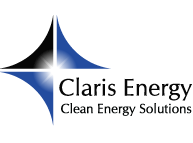 The Expiring Provisions Improvement Reform and Efficiency Act (EXPIRE) was passed by the Senate Finance Committee in the beginning of April, 2014. EXPIRE is an essential step in the right direction, extending the duration of many energy efficiency stimuli. 45L tax incentive is one of these stimuli that will be available to all homes acquired before January 1, 2016.
The Expiring Provisions Improvement Reform and Efficiency Act (EXPIRE) was passed by the Senate Finance Committee in the beginning of April, 2014. EXPIRE is an essential step in the right direction, extending the duration of many energy efficiency stimuli. 45L tax incentive is one of these stimuli that will be available to all homes acquired before January 1, 2016.
What is It?
The 45L tax incentive applies to all newly-constructed, rented or owner-occupied properties. The energy efficiency tax incentive can be claimed by the owner in the year during which the property became occupied.
Originally, 45L tax incentives were available solely for properties purchased and occupied prior to 2014. EXPIRE has changed the rules. The section 45L incentive applies to a big number of construction projects like townhouses, apartments or detached houses.
Who can Claim It?
Eligible contractors are the only individuals that can qualify for the 45L incentive. Several factors determine eligibility.
An eligible contractor is someone who executes projects corresponding to the requirements and has basis in the property during the construction process. For example, a contractor who builds a home corresponding to the 45L tax incentive requirements and who sells or leases it will be an eligible contractor.
Qualification Criteria
Several criteria need to be met for properties to qualify for the incentive.
The energy consumption of the unit has to be at least 50 percent lower than that of a comparable property. At least 10 percent of the energy saving should be produced by the type of building envelope chosen.
Many experts believe that the construction of brand new units makes it a lot easier to address these requirements. Rehabilitation projects are more difficult to execute and the cost of energy-efficient building materials should be taken in consideration.
Tax Incentive Benefits
Applying for 45L tax incentive involves several steps. Detailed energy analysis of the building is the first and the most important part of the process. A certified and independent third party should be responsible for this kind of analysis.
Many companies can help for the preparation of all the necessary documents. Being careful with the paperwork is one of the keys to success with this kind of tax reduction tool.
The filling of an amended tax return will be sufficient to make use of the 45L incentive if a contractor has missed claiming this reduction possibility for prior years.
How about the benefits? These really depend on the size of the project. A bigger number of units will result in a larger sum. A complex that consists of 50 units corresponding to the energy efficiency requirements could provide tax savings of up to 100,000 dollars, for example.
There is one more important benefit connected to 45L tax incentives. Many contractors are already paying attention to energy efficiency and relying on procedures that increase energy savings. As the procedures are becoming the norm, the execution of such construction projects is becoming an easier task.
The 45L tax incentive is just one of the opportunities that contractors involved in energy efficiency projects can benefit from. A focus on such developments results in various additional advantages, which is why are starting to make the transition.
Steve Nanos
Latest posts by Steve Nanos (see all)
- LED Lighting – A Great EPAct 179D Qualification Possibility - February 3, 2015
- 45L Credit Requirements for Begun Constructions - January 29, 2015
- Can Section 179D Incentives Help Businesses Save a Lot of Money? - January 27, 2015

 609.275.8484
609.275.8484